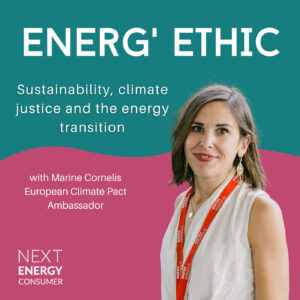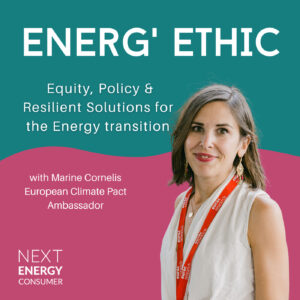Recently, some relatives living in the Apulian countryside told me that they started to sort their waste because a recycling trash truck began to visit their hamlet once a week. They praised the easiness of the system and the simplicity of the process. Not that they weren’t already convinced of the importance of environment protection – they had been harvesting and growing their fruits and vegetables for years without any pesticide before taking on the “recycling” move, and had been practicing the principles of circular economy for years without knowing the name -, but the fact that there was no easily accessible collection point close to their home was blocking them. This very straightforward change of behaviour made me think of other areas where mental blocks are preventing our societies to do what seems the best for the planet, and how important it is to keep our eyes and ears open to other sectors.
Sustainable buildings
40% of all the energy consumed in the EU is used for heating and cooling buildings. Worldwide, more than a billion people are at risk from a lack of air conditioning and refrigeration to keep them cool and to preserve food and medicines.
In June, I was invited to an ENABLE.EU workshop in Sofia (Bulgaria) to brainstorm on the transition to a low carbon energy future and measures to implement to see a long-term shift in ordinary practices. I was surrounded by brilliant people from very different countries and with very diverse backgrounds, and we all agreed that a lack of awareness and a poor understanding of the issues at stake were probably the most common defects among the general public and policy-makers.
Self-generation of energy and stimulating the installation of solar PV was one of the recurring ideas proposed to mitigate climate change. However, the idea could be immediately challenged by regulatory, historical, economic and social constraints. Solar panels are often perceived as ugly, and it would be -currently- impossible to install them on the iconic rooftops of Prague or Rome, for instance. In Paris, the average size of a flat is below 60 square meters, hence making it impossible for a number of households to own a battery and store the energy produced. In addition, the home buying process is hard in many big cities, such as London, and leading to an even more unbalanced relationship between tenants and landlords, making it difficult for tenants to ask for home improvements and get involved in direct generation from solar PV.
On 19 June 2018, a new Directive on the Energy Performance of Buildings was published. From 1 January 2021, all new buildings in the EU should use near-zero energy for heating, cooling or hot water. In order to direct investment towards the renovation of building stock, the Commission also launched in 2016 the Smart Finance for Smart Buildings initiative, which aimed to unlock an additional €10 billion of public and private funds for energy efficiency and renewables uptake in buildings.
However, I am not convinced that we will find long-term solutions by continuing this segmentation and focusing only on recent and/or public real estate. I firmly believe that it is time for the private sector, entrepreneurs, banks, design studios, and architects to take an interest in domestic uses, especially for people who do not spontaneously have the idea of taking energy efficiency measures.
Making our planet great again
Often, we don’t realise how important it is to be bold, and how important it is to propose attractive, fit-for-purpose design in order to engage in energy efficiency and sustainability. For instance, I am surprised that despite the success of home makeover TV programmes, no one has yet proposed a specific focus on energy efficient measures and funding projects, with a before and after which would also look at the utility invoices.
The ecodesign directive was an excellent step forward, not only by giving consumers keys to understanding the impact of their domestic appliances on their consumption but also, and even more importantly, by gradually eliminating the most energy-consuming appliances from sales and thus forcing manufacturers to make efforts. In the same vein, the recent EU strategy against single-use plastics is very welcome.
However, these measures must go further, for example by integrating the issue of the environmental footprint of our telephones, computers and digital activities; and also by integrating the issues relating to the recycling of all raw materials and components, as well as measures relating to the circular economy and the fight against waste. It should not cost more to buy a cleaner or better performing device, yet many consumers are still not able to make the most sustainable choice.
Similarly, in the retail sector, products that have received the European eco-label or are organically certified are still too often considered ‘premium’ products compared to conventional products, and many families cannot afford them. These examples are indeed also visible in the textile, mobility, food and, in particular, the breeding and meat production sectors.
We have to question the way we have been and we are using our resources and the different types of energies we consume, and adopt a much more integrated approach. No change can happen if we let the enormous majority of the world’s population apart.
Maybe we need tougher measures, enforcement and straightforward policies. Maybe we need groundbreaking initiatives coming from the private sector and bold entrepreneurs to take the lead and make the planet great again. What is certain, is that the world needs a unified approach and a comprehensive strategy involving all stakeholders and leaving no one behind.
—
I wish you a very nice summer break, and before leaving, I warmly encourage you to participate in the European Commission survey on the Future climate and energy policies on the Strategy for long-term EU greenhouse gas emissions reductions (until 9 October 2018).


